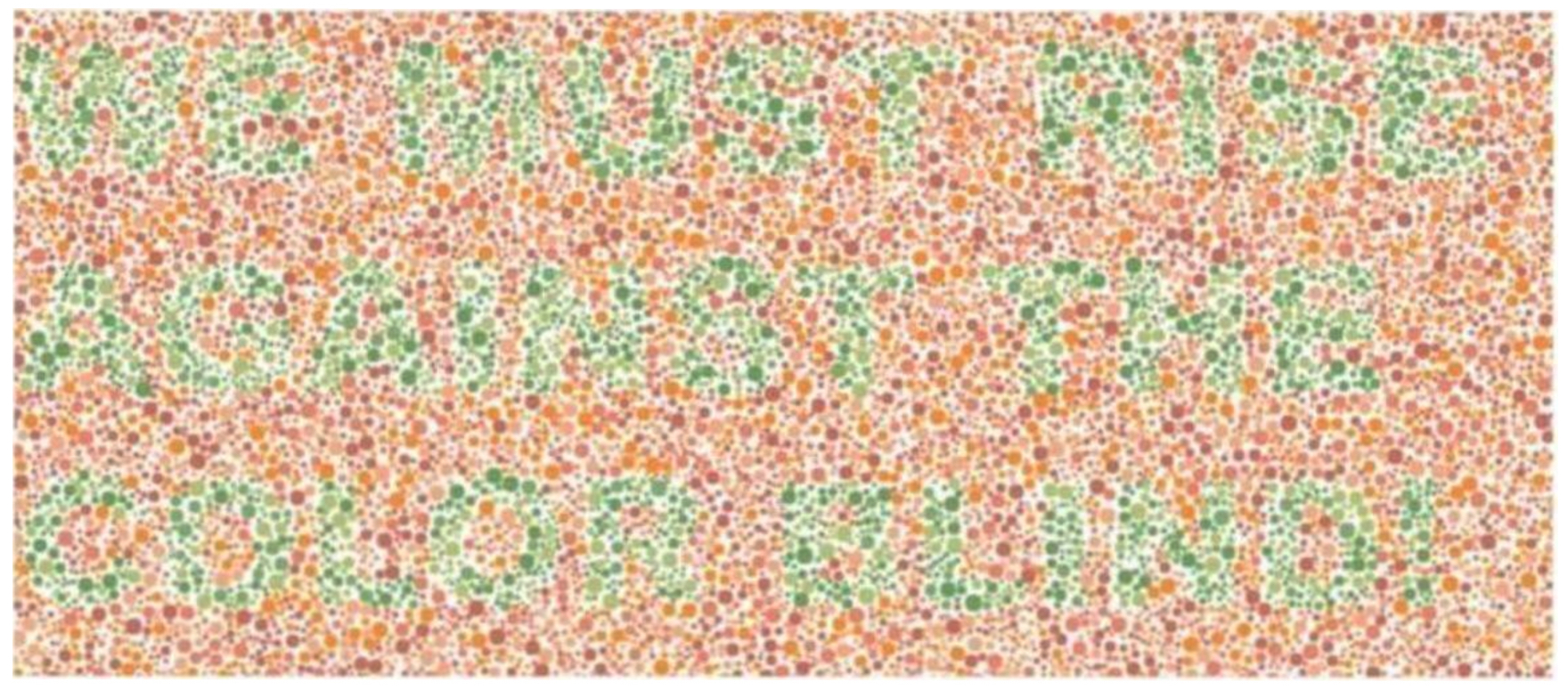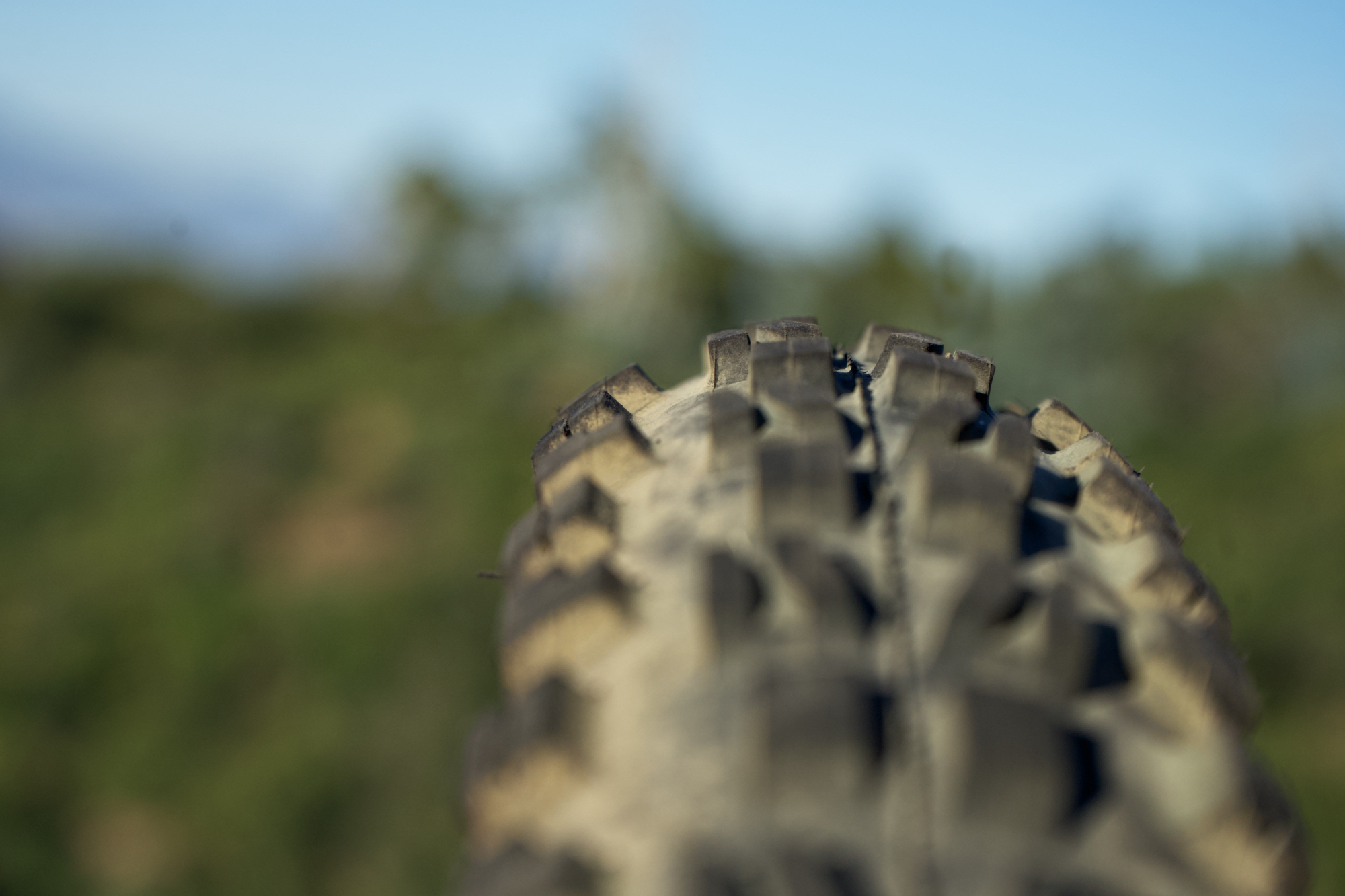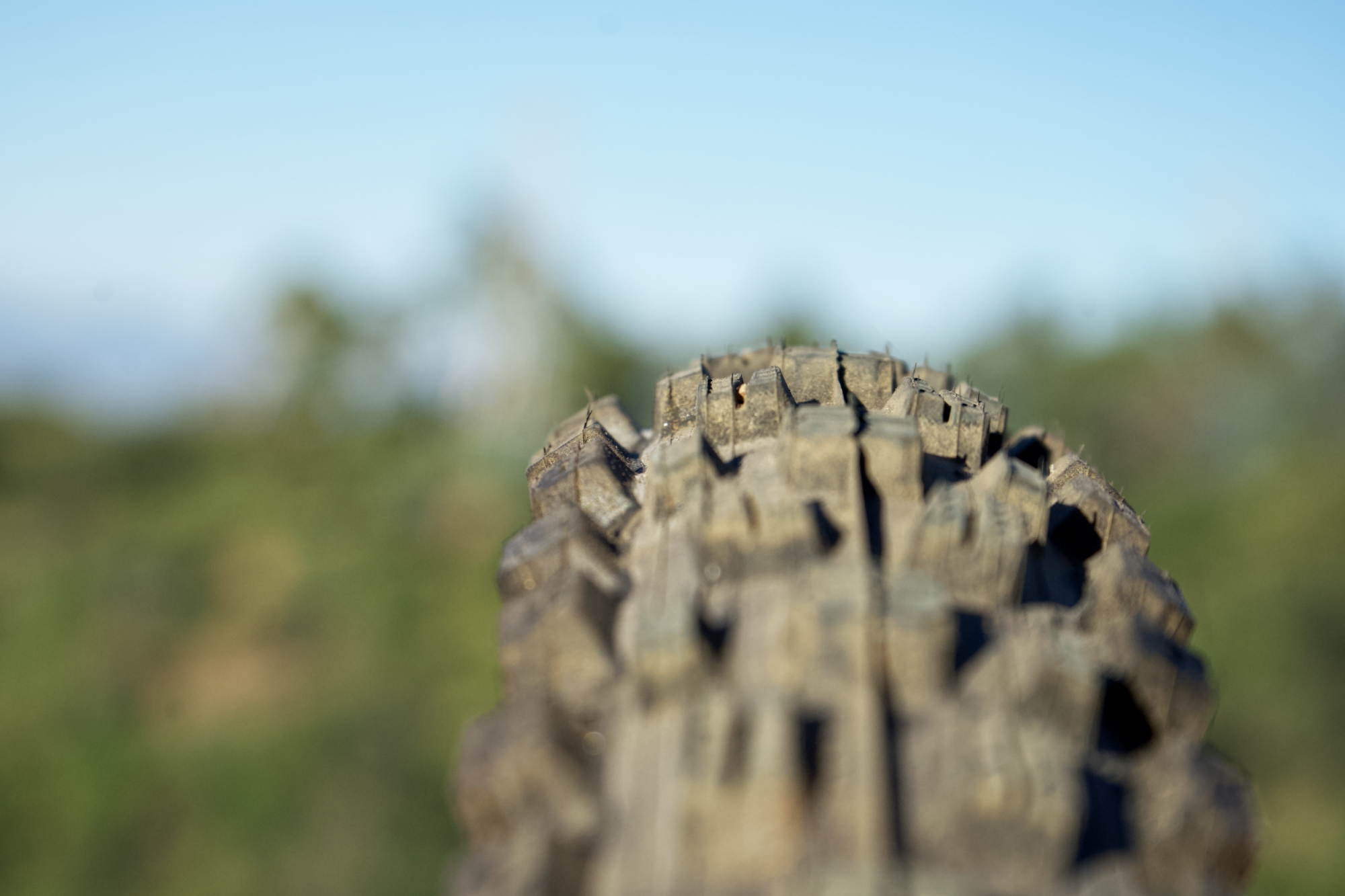The Maxxis Assegai is one of the most aggressive front tires on the market, but you don’t necessarily have to be aggressive to enjoy it. Its adaptability to multiple riding styles and multiple terrains has gained the Assegai quite the following, including from competing tire brands. American Classic, Delium, and Bontrager have launched lower-priced tires clearly inspired by the Assegai, and Travis Engel is here to tell us how how they stacked up against his favorite front rubber.
I suffer from a condition known as “Rear-Tire Blindness.” I can’t tell if one rear tire corners better or stops better or is more efficient than another. I usually don’t even know I’ve worn out my rear tire until someone sees it and asks me, “Don’t you work in the bike industry?” I mean, I can sense a difference in tread patterns if they’re in entirely opposite categories. Or if one tire has XC casing and the other has DH casing. In that way, Rear-Tire Blindness is a lot like color blindness (which I also suffer from). It’s not as if I see in black and white, but I’m only confident when dealing with primaries. To me, green is green. Unless it’s brown. Sometimes green is brown.

But I believe there’s hope. In fact, I once suffered from the much more serious Front-Tire Blindness. Sure, I relapse sometimes. When trail conditions are good, almost any reasonable front tire will keep me upright, so their performance starts to blend together. But where I live, conditions are rarely good. They’re usually loose and dry. And for the past four years, I haven’t found a tire that handles loose and dry better than the Maxxis Assegai.

Specifically made for front-wheel use, the Assegai doesn’t feature the broad-based center knobs that handle the straight shearing forces faced by rear tires. Its tread pattern is oriented more towards cornering traction than braking traction, though the center knobs are still square-edged to grab what they can get. And those knobs are not sparsely placed like they would be on a mud tire, though they are uncommonly tall. And the chassis has a slightly less square, more arched profile. But the standout feature of the Assegai is the row of transition knobs between the side and center rows. Compare this to the Maxxis Minion DHF which has an open channel.


These little knobs are what so endear the Assegai to me. They keep traction even when I can’t commit to a turn. Commitment is hard. The dry, slippery surface of my local trails have given me trust issues. I know that I’m supposed to lean in. To believe that my knobs will do their jobs. But when conditions are bad, I just have to be realistic. The Assegai is good at being realistic. It offers consistent traction, even if I’m not in an aggressive lean. The channel on the DHF or the similar Specialized Butcher gives those knobs room to dig in, but not until you really go for broke around a corner. That’s great when you have traction, but I rarely do. So, I like that the Assegai tolerates my occasional timidness.

And it seems I’m not alone. A few tires have popped up recently that were clearly inspired by the Assegai. Some of them cost literally half as much as the original. I wanted to gather them here to see how they compare. There’s the American Classic Tectonite, the Delium Rugged, and the Bontrager SE6. I won’t get too deep on any one of these tires because every version shares the traits I just covered. But I will touch on the ways I felt that each stood out or fell short. Every tire tested was a 29×2.5, and I chose the models with the most comparable weight. All were tested at 22 PSI on the same 30mm inner width alloy rim. I’ll also touch on longevity, but some of the test tires ended up seeing more miles and harsher conditions than others. That’s why all the tires in these photos look like they haven’t seen more than one ride. They haven’t. These were the backups, in case a test tire suffered a catastrophic failure. But that never happened, so I won’t touch on durability at all. With that out of the way, if you’re thinking about trying an Assegai on for size, let’s figure out which shade suits you best.
Maxxis Assegai
- Model Tested: EXO+ 3C Max Terra
- Price: $101
- Weight: 1,138g
- Casing width: 60mm
- Tread width: 63mm

Not surprisingly, the original Assegai offers the widest variety of configurations. Variety is what Maxxis does. Across both 27.5 and 29” sizes, there are 17 options. Odds are, somewhere in there is your absolute perfect front tire, so pick the Assegai if you’re picky. Personally, I pick the EXO+ casing and Maxx Terra triple compound. By the way, “triple compound” usually means there’s a base of firm rubber under the whole tread, a strip of medium rubber capping off the center knobs, flanked by two strips of soft rubber capping the side knobs. The Delium Rugged shares a similar construction, and was the only other tire to perform as well on smooth, wet rocks and roots as the Assegai. I started this test in a very wet season, though it feels like ancient history now that L.A. is marching into the dog days of summer. If I rode somewhere wetter, I’d probably get a Maxx Grip compound, which further ramps up the softness of the two outer layers.
And that adaptability is where the authentic Assegai stands out. If you’re in a wet climate, there’s the Maxx Grip. If you want something longer-lasting, there’s a simpler, cheaper dual compound. If you’re a bruiser, there’s the Double Down or even DH casing. If you’ve got a light touch, there’s the standard EXO casing. Of course, like anything else, tires get more expensive as they get more specialized. But if you want the freedom to choose the perfect tire, it’ll cost you. Or if you don’t, that’s where these other tires come in
Pros:
- Wide variety of configurations
- Good performance in wet conditions
Cons:
- Expensive
- Side knobs showed wear early
See more at Maxxis


American Classic Tectonite
- Model Tested: TR
- Price: $48
- Weight: 1,158
- Casing width: 62mm
- Tread width: 64mm
American Classic’s surprise entry into the tire market represented a bit of a rebellion against the Maxxis-es of the world. The driving principle was affordability, not variety. They offer just six mountain-bike models, one being very similar to the Assegai. The Tectonite comes in just two casing / compound configurations: EN (enduro) and TR (trail). I tested the TR model because it most closely matched the weight and thickness of my EXO+ casing Assegai. But the Trail model only comes in a dual-compound tread, meaning a hard rubber base and a medium rubber across all the knobs. The softer, grippy side knobs of the triple-compoud version are only available on the heavier EN version. That’s the snag in American Classic’s affordable but narrow lineup. The (claimed) 1,200g 29” EN Tectonite is only $2 more, but it’s just a bit heavier than I want on a front tire, so I was stuck with the more simple TR.

Though it didn’t shine when holding onto wet rocks or roots, the Tectonite worked remarkably well in the dry. And I didn’t standardize my durability testing here, so that won’t be a focus, but it took the Tectonite longer than any other tire to start showing wear on its side knobs. And that’s a good thing in the dry steeps of my local trails. Speaking of which, only the Bontrager did better in straight-line braking, and its moderate to aggressive cornering was as predictable as my old faithful Maxxis. But most importantly, this tire costs less than half as much. It’s not an entirely fair comparison because, like Delium, American Classic sells exclusively consumer-direct. There’s no way for your local shop to get a cut. But if times are tough and the dirt is dry, American Classic is the low-budget winner.
Pros:
- Great value
- Long wearing
- Good braking power
Cons:
- No soft-compound option in the light casing
- Not great for wet climates
See more at American Classic


Delium Rugged
- Model Tested: All-Around
- Price: $49.99
- Weight: 1,039
- Casing width: 62mm
- Tread width: 63mm
There are four tires in Delium’s mountain lineup, all available in either an “All-Around” or “Reinforced” casing. And all but three of them feature a triple compound, regardless of casing. That includes Delium’s take on the Assegai, called the “Rugged.” I tested the lighter All-Around casing, and though I hadn’t even heard of Delium until I started this review, the Rugged performed a lot like the original. That intermediate lean seemed the most predictable. And though it didn’t excel in straight-line braking power like the Bontrager or the American Classic, it performed incredibly well on wet surfaces.

But for most of my year, I’m nowhere near a wet surface. Just like the Assegai, I didn’t notice much advantage to the softer side knobs of Delum’s triple compound when my trails were dry. But I did notice that they showed wear quicker than the Bontrager and American Classic. A longer-wearing version would be nice to see, but adding models tends to add price. That’s not what the Rugged set out to be. It’s a performance-focused tire, which I’ve never said about a tire at this price. If I lived somewhere that it rained, but I still had Southern California’s high cost of living to deal with, this would be my front tire.
Pros:
- Best value in the test
- Good performance in wet conditions
- Feels the most like the original Assegai
Cons:
- No longer-wearing options available
See more at Delium


Bontrager SE6
- Model tested: “Team Issue,” the only issue they make
- Price: $84.99
- Weight: 1,083g
- Casing width: 60mm
- Tread width: 63mm
At $84.99, the SE6 isn’t exactly cheap, especially given that there’s just one configuration and one wheel size. But it’s $16 less than my go-to Assegai. Plus, unlike the Delium or American Classic, you can buy one at a real bike shop. Hot take: A Trek-owned bike shop still counts as a real bike shop. And although these are technically dual-compound, not triple-compound, they’re not like the American Classic. Instead of a hard base with a medium outer layer, Bontrager foregoes the hard base while instead constructing all of the tire’s “meat” with a row of medium rubber down the center and two rows of soft rubber on the edges. Still, the SE6 didn’t stand out as much in the wet as the Maxxis or Delium, but it also didn’t show wear nearly as quickly.

The SE6 tread is more of a departure than any other on this list. Instead of the center knobs alternating 1-2-1-2, this is more of a 1-2-2-1 affair. And those ever-important transition knobs are a lot more substantial than any other in the test. It gives the overall tread more of a paddle shape, which may be why I found this tire to offer the best straight-line stopping power in the test. And that 1-2-2-1 center knob configuration means that, with regards to that open channel topic, these kinda split the difference between the Assegai and the DHF. I had better luck cornering in soft dry dirt in the SE6 than other tires. Maybe that was because of that side channel, maybe I was just having a good day. Regardless, these tires were the most rewarding when I had the confidence to really trust them.
Pros:
- Best braking performance in the test
- Rewards aggressive cornering
- Lower price than other high-end non-consumer-direct tires
Cons:
- Only one casing, width, and compound option
- Only 29-inch
See more at Bontrager

So, there weren’t any bad tires in the test. How could there be. They’re all inspired by the best front tire ever made. So, that makes it hard for me to pick a favorite. Truth is, I’ll happily use every one of these tires until I’ve run out. But if I spent most of my time where it’s steep and rocky, I’d pick the Bontrager SE6. If I lived up in the Pacific Northwest, I’d pick the Delium Rugged. If I ever decide to be smart about money, I’ll run the American Classic Tectonite. But if price were no object, I’d probably stick with the original Assegai.









